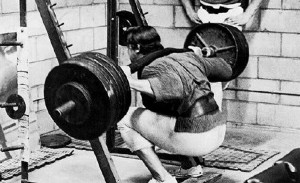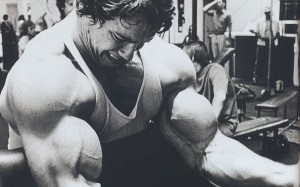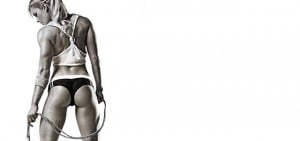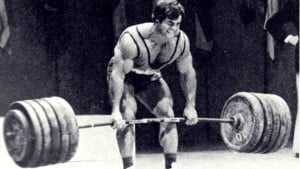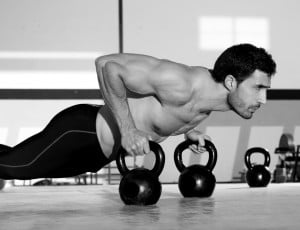Building a workout routine can be a daunting task. And for good reason.
Quite frankly…there are a lot of ways to mess it up.
- There are a lot of variables to account for: your body, goals, schedule, lifestyle, preferences, training experience, and more.
- There are a lot of moving parts in the way of exercises, rep schemes, intensity, volume, and frequency.
- There are a lot of opinions as to what’s best for building muscle and strength, losing fat, and improving athletic performance. And many of those opinions are completely contradictory.
It’s really no surprise that gyms everywhere are full of people doing all kinds of strange, ineffective workout routines. I should know because I was once one of them.
Fortunately, however, you don’t need a degree in biomechanics and a couple thousand hours of experience to build an effective workout routine.
The truth is you only need to know and apply a relatively small number of training principles to derive the majority of potential benefits from regular exercise.
Out of all the possible knowledge you could acquire about diet and exercise, 20% is going to deliver 80% of the results.
And that’s why, in this article, I’m not going to overwhelm you with every possible workout split and schedule. I want to prevent the dreaded “paralysis by analysis.”
Thus, I’m going to keep it relatively simple here and present you with the options that are best suited to the majority of goals and lifestyles. And by the end of this article, you’ll know exactly how to build an effective workout routine that suits your goals, fits your lifestyle, and
So, let’s start with how to build a weekly workout schedule.
Table of Contents
How to Build Your Weekly Workout Schedule

While getting into great shape doesn’t require nearly as much time in the gym as many people believe, an effective workout routine generally meets the following criteria:
- It involves 3 to 6 workouts per week.
- Each workout is 25 to 75 minutes long.
- It includes both resistance and cardiovascular training.
Thus, if you can dedicate about 4 to 6 hours to exercise each week, and train 3 to 6 days per week, we’re in the business.
If you can’t, then I recommend you check out the 2- and 1-day routines I lay out in my article on how to maintain muscle with minimal exercise.
So, with that under our belts, let’s look at a handful of time-proven workout schedules and learn how to use them to build a workout routine that will enable you to reach your goals.
The 3-Day Workout Routines
I recommend you stick to one of two 3-day workout routines…
The Push Pull Legs Workout Routine
Push Pull Legs has been around forever, and for good reason: it’s simple, it makes good biomechanical sense, and it works.
Here’s how it breaks down:
Day 1
Push
On this day you train your chest, shoulders, and triceps.
Day 2
Pull
On this day you train your back and biceps.
Day 3
Legs
I think you know what this entails. 🙂
In terms of weekly scheduling, I recommend you put one day of rest in between each workout, like this:
Monday
Push
Wednesday
Pull
Friday
Legs
Or two days of rest in between your pull and legs workouts, like this:
Monday
Push
Tuesday
Pull
Friday
Legs
If you use this latter schedule, you’ll probably find your legs fresher come Friday because your pull day is going to involve heavy deadlifting, which really hits the hamstrings.
(It’s worth noting that this hamstring soreness issue is more relevant to newbies because they experience quite a bit more muscle soreness than intermediate or advanced weightlifters.)
The Chest & Tris, Back & Bis, Legs & Shoulders Workout Routine
This is an old-school bodybuilding routine that has stood the test of time.
Day 1
Chest & Triceps
The triceps are heavily involved in your chest training so it makes sense to train them directly as well.
Day 2
Back & Biceps
The back & biceps relationship mirrors the chest & triceps, which is why they are usually combined.
Day 3
Legs & Shoulders
These muscle groups are obviously completely unrelated, but they’re what’s left so they get combined. And they make for a tough workout.
Which 3-Day Workout Routine is Best?
I wouldn’t say one is objectively better than the other. It depends on your personal preferences and where you’re at in your development.
If you feel you still need a significant amount of development in your chest and shoulders, I recommend you go with the chest & triceps workout routine. Training your chest and shoulders separately allows you to train each more intensively, which helps maximize progressive overload.
The 4-Day Workout Routine
Here’s the 4-day workout routine that I recommend you follow…
Day 1
Chest & Triceps
This is the same as in the 3-day workout routine.
Day 2
Back & Biceps
Day 3
Shoulders
In this routine, shoulders get their own day, which helps give them the extra work they need to grow in proportion to the rest of the upper body.
Day 4
Legs
Leg training is by far the hardest and most exhausting, so it helps to give it its own day.
Doesn’t Training Everything Once Per Week Not Work?
Training frequency is the controversy du jour these days and opinions are all over the place.
While the subject is incredibly complex and there are quite a few personal variables involved (some people’s bodies can just do things that others’s can’t), the simple truth is this:
Regardless of training frequency, you can only train a muscle so much every week before it becomes counter-productive.
That is, you can only push your muscles through so many reps of exercise each week before the body isn’t able to keep up with recovery. Whether you do one workout for a muscle group in a week or five, it can only take so much of a beating before becoming overtrained.
Nobody even half-informed on the subject of weightlifting will argue that. But there’s a lot of debate as to the best way to do those weekly reps: in one workout per week? Or split up into two or three workouts or more?
Training everything 2 or 3 times per week is currently more popular than once per week, but that doesn’t necessarily mean it’s better.
Let me explain.
The “once-per-week” or “body part” split has gotten a bad rap for a good reason: many body part split workout routines suck.
They get so much wrong:
- They emphasize isolation exercises.
- They emphasize high-rep, “pump” training that often includes stuff like supersets, drop sets, giant sets, etc.
- They have you beat each muscle group to death with 100+ reps per workout.
Yes, that type of body part split workout routine is crap. I should know because I did those types of routines for years and years and didn’t have much to show for it.
A properly designed body part split routine is a whole different story, though.
When you train each muscle group once per week, with the proper amount of reps in each workout, and with the emphasis on heavy, compound weightlifting, you can make extraordinary gains.
I’m not only speaking from personal experience here but from my experience working with thousands of people as well.
It jives with the current scientific understanding of the relationship between training intensity, volume, and frequency, as well, which is this:
Research indicates that total weekly training volume and intensity is more important than frequency.
That is, so long as you hit each muscle group with the right amount heavy reps each week, doing them in one workout or three isn’t going to significantly change your results.
And I would argue that a well-designed body part split is superior for intermediate and advanced weightlifters because it allows you to maximally overload each muscle group.
You see, training everything 2 or 3 times per week means that you’re going to be combining major muscle groups in your workouts. For instance, you might use the push, pull, legs template and run it twice every 7 days or group your exercises into upper- and lower-body workouts that you repeat throughout the week.
Once you build a reasonable amount of strength in your pressing, pulling, and squatting, those combined workouts get really hard. And you just can’t hit every major lift with the same intensity as you can when they are separated.
For example, if you’re squatting and deadlifting heavy weight in the same workout, whichever comes second is going to suffer. You’re just not going to be able to lift as much weight as you could if the exercises were performed on different days.
And that means less progressive overload over time (less weight added to the bar over time), which means less long-term gains.
Full-body workout routines are even harder. They are a viable option for newbies but are downright torturous once you’ve built up your strength.
Many people also run into workout schedule issues with programs that have them train everything 2 and 3 times per week. Most of the better designed programs require that you change workout days each week, and include the weekends in the mix.
This is fine if you’re 20-something years old and do whatever you want whenever you want, but it doesn’t work for the majority of people working out that have to fit exercise in between their work, family, and social obligations.
So, while I’m not against training muscle groups multiple times per week, I’m not going to recommend it here.
The 5-Day Workout Routine
Day 1
Chest
Day 2
Back
Day 3
Arms
Day 4
Shoulders
Day 5
Legs
This is my favorite of all the workout schedules for maximizing muscle growth and strength.
Each workout takes about 45 minutes, each muscle group gets maximal stimulation, your muscles and central nervous system get enough time to recover, and it fits perfectly with most people’s schedules (Monday through Friday with the weekends off).
The 5-day routine also gives you room to add some extra sets for your weak points.
For instance, many guys complain about lack of chest development and thus can add 3 sets of incline pressing to day 4, which can be done before the shoulder training.
Many girls are focused on improving their butt and legs and thus can add 3 sets of squats to day 2, done after deadlifts, and 3 sets of hip thrusts to day 5, done after legs.
The Best Exercises for Building Muscle and Strength

There are two primary types of weightlifting exercises: compound exercises and isolation exercises.
Compound exercises involve multiple major muscle groups and require the most whole-body strength and effort. Examples of compound exercises are the squat, deadlift, bench press, and military press.
Isolation exercises involve one muscle group and require significantly less whole-body strength and effort. Examples of isolation exercises are the biceps curl, cable flye, and side lateral raise.
The subject of compound exercises versus isolation deserves (and will get) its own article, but here’s the long story short:
If you want to build maximum muscle and strength, you want to focus on compound exercises in your workouts.
Isolation exercises can and should be used to develop smaller, stubborn muscles like the shoulders and arms and support the growth of larger muscle groups, but they should never be the focus of a workout routine for natural weightlifters.
Just knowing that isn’t enough to build an effective workout routine, though, because there are quite a few compound exercises you could do for each muscle group.
Which specific exercises are the best for building muscle and strength? Here’s a handy list taken from my books Bigger Leaner Stronger and Thinner Leaner Stronger…
The Best Chest Exercises
Incline Barbell Bench Press
Incline Dumbbell Bench Press
Flat Barbell Bench Press
Flat Dumbbell Bench Press
Dip (Chest Variation)
These are the exercises you must master if you want to build an impressive chest. Period.
Forget cable work, dumbbell flyes, push-up variations, machines, and every other type of chest exercise out there for now.
They just aren’t nearly as effective as the above core, foundation-building lifts and are only for advanced weightlifters who have already paid their dues with the heavy pressing to build big, strong pecs.
The Best Back Exercises
Barbell Deadlift
Barbell Row
One-Arm Dumbbell Row
Pull-Up
Lat Pulldown (Front and Close-Grip)
T-Bar Row
Seated Cable Row (Wide- and Close-Grip)
Chin-Up
Barbell Shrug
The deadlift is, by far, the most effective back exercise you can do. You just can’t beat it for all-around development and strength, and that’s why I recommend you do it every week.
The Best Shoulder Exercises
Seated Barbell Military Press or Standing Barbell Military Press
Seated Dumbbell Press or Arnold Dumbbell Press
Dumbbell Side Lateral Raise or One-Arm Dumbbell Side Lateral Raise
Rear Delt Raise (Bent-Over or Seated)
Face Pull
Barbell Rear Delt Row
Dumbbell Front Raise
As you can see, I’m a fan of pressing. As with the chest, you just can’t beat heavy pressing for developing your shoulders. And as a natural weightlifter, you’re going to need as much help as you can get in this department.
If all you do is press, however, you’ll find that your middle and rear heads of your deltoids fall behind in development. This is why a good shoulder workout trains all three heads of the muscle by having you press as well as do side raises and something for the rear delts.
Just like any other muscle group, the shoulders can benefit from higher-rep work, but you have to emphasize the heavy weightlifting if you want them to grow.
The Best Leg Exercises
Barbell Squat
Front Squat
Hack Squat (sled, not barbell)
Leg Press
Barbell Lunge (Walking or In Place)
Dumbbell Lunge
Romanian Deadlift
Leg Curl (Lying or Seated)
Working legs is very simple. Rule #1: Always do squats. Rule #2: Always do squats. Rule #3: You get the point.
The bottom line is that every leg workout should begin with either the back or front squat, with the former focusing on the hamstrings and the latter on the quadriceps.
The Best Biceps Exercises
Barbell Curl
E-Z Bar Curl
Dumbbell Curl
Hammer Curl
Chin-up
Short and sweet. This is all you need to build big biceps.
The Best Triceps Exercises
Close-Grip Bench Press
Seated Triceps Press
Dip (Triceps Variation)
Lying Triceps Extension (“Skullcrusher”)
Triceps Pushdown
Like with biceps, you just don’t need much variety in your choices of triceps exercises to get those “horseshoe” tris.
The Bottom Line on the Best Weightlifting Exercises
Simply put: these are the only exercises you’ll ever need for building a strong, incredible-looking physique.
Trust me. I used to think variety of exercises was the key to gains and that didn’t get me very far.
One of the biggest workout lessons I’ve learned is that progression on the right exercises, not exercise variety, is the key to building a strong, muscular body.
Ditch all the fancy, “functional” crap and get back to basic barbell and dumbbell training and you’re going to take a big step toward finally achieving the body you’ve always wanted.
What About Core and Calves?
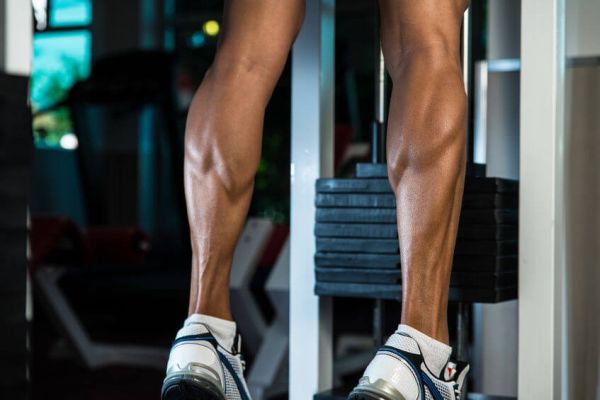
Many workout routines neglect core and calf training, claiming that you don’t have to train them directly if you’re doing everything else right.
I disagree.
If you already have a great core and great calves, this is true. You don’t have to train them directly to maintain what you have.
If you need more development in your core or calves, though, you’re going to have to include them in your workout routine.
So, if you’re still trying to get those elusive six-pack abs or get rid of those spindly dress legs, check these articles out:
Which Rep Range is Best?

The subject of ideal rep ranges is even more muddled than training frequency.
Most people subscribe to the hidebound bodybuilding prescription of 8 to 10 or 10 to 12 reps per set for building muscle and lower for building strength…and there’s a reason why most people fail to build impressive amounts of muscle and strength.
You see, rep ranges should be viewed as a “strength-endurance continuum,” as scientists call it. Heavier weights mean less reps and that’s ideal for building strength, and lighter weights means more reps and that’s ideal for building muscle endurance.
Or, in other words, if you want to be able to squat 500 pounds, you’d better train heavy. And if you want to be able to do 50 reps with 225, you’d better train with lighter weights.
How does muscle growth fit in there, you wonder?
The simple explanation is this:
- If you want to build larger muscles, you need to consistently add weight to the bar over time, resulting in progressive overload of those muscles.
- If you want to consistently add weight to the bar over time, you have to consistently get stronger.
- If you want to consistently get stronger, you have to consistently emphasize the lower-rep portion of the strength-endurance continuum in your training.
Sure, we could get more technical and talk about things like myofibrillar and sarcoplasmic hypertrophy, but the three points above are the long story short.
There’s a reason why the biggest guys in your gym are almost always the strongest. And why most people stop gaining muscle when they stop gaining strength.
So, let’s lay out some numbers.
The Best Rep Ranges for Men
Men that are new to weightlifting should emphasize the 4 to 6 rep range in their training. This means lifting weights that are 80 to 85% of your 1RM.
Men that are experienced and advanced weightlifters can profitably include lower- and higher-rep training in their workouts (known as periodizing your workouts) as well.
Proper periodization will be an article unto itself, but if you’re ready to start periodizing, I recommend you read my book Beyond Bigger Leaner Stronger. It was written specifically for intermediate and advanced weightlifters that want to achieve the upper limits of their genetic potential.
The Best Rep Ranges for Women
Women that are new to weightlifting should emphasize the 8 to 10 rep range in their training. This means lifting weights that are 70 to 75% of your 1RM.
I recommend this rep range and not 4 to 6 for women new to lifting because they need to build a basic foundation of strength before they can safely and effectively work with heavier weights.
What I’ve found works particularly well is for women to start in the 8 to 10 rep range and then, after about 6 to 8 months, incorporate heavier lifting into their routines in the form of 4-to-6-rep training.
Specifically, what I do is have them start their workouts with 3 sets of 4 to 6 reps of a compound exercise like the squat, deadlift, military or bench press, and then do the rest of their workouts in the 8 to 10 rep range.
How Many Sets and Reps Per Workout?

We touched on the subject of the optimal number of reps per week per muscle group earlier but haven’t gotten into the specifics yet.
The main thing you need to know is that as intensity goes up, volume must go down.
Intensity refers to the amount of weight lifted and volume refers to the amount of reps done.
Thus, the heavier the weights you’re lifting, the less reps you should be doing each week.
And as I’m telling you to emphasize heavy weightlifting in your workouts, you’re going to be doing quite a few less sets per workout and per week than most other people in the gym.
Finding scientific help on the matter of optimal training volume is tough due to the number of variables involved, but something of an answer can be found in a large review conducted by researchers at Goteborg University.
I’ll get straight to the point and quote the research:
“Overall, moderate volumes (~30 to 60 repetitions per session for [Dynamic External Resistance] training) appear to yield the largest responses.”
While my experience working with a LOT of people has taught me this range can be stretched a bit, especially in experienced weightlifters, it has a lot of anecdotal support and is commonly recommended by educated, experienced weightlifters and bodybuilders.
If you look at many of the popular, tried-and-true routines out there, the weekly workout volume generally falls somewhere in the range of 30 to 60 reps per 5 to 7 days, and they rarely go beyond 100 reps per workout.
For example, my Bigger Leaner Stronger program for men has you do 9 to 12 sets of 4 to 6 reps per major muscle group. You move up in weight once you get 6 reps (which usually knocks your next set down to 4 reps), so the workouts range between 45 and 60 high-intensity reps. And people make fantastic strength and size gains on the program.
My program for women, Thinner Leaner Stronger, has you do 9 to 12 sets of 8 to 10 reps and uses the same progression model. Thus, most workouts around around 80 to 100 moderate-intensity reps.
My program for advanced weightlifters, Beyond Bigger Leaner Stronger, entails doing about 60 to 75 reps per workout, with a combination of very high-intensity, high-intensity, and moderate-intensity work.
These approaches to both workout volume and intensity have both scientific and anecdotal evidence on their sides. They work, period.
How Long Should You Rest In Between Sets?
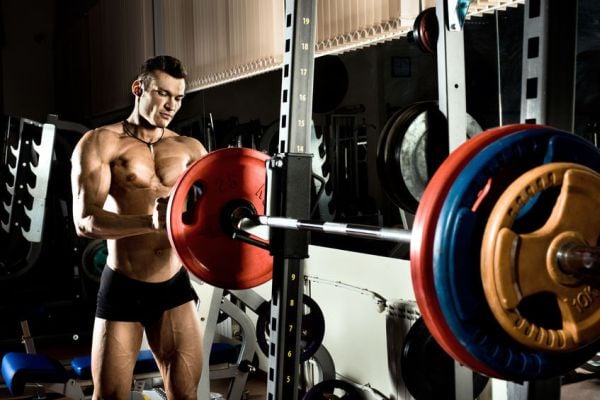
Most people are in the gym to move and sweat, so sitting around in between sets seems counter-productive. Thus, they keep rest periods as short as possible or, in some cases, eliminate them altogether with super-sets, drop-sets, “metabolic conditioning” bouts, and other methods of staying in motion.
If their primary goal is to build muscle and strength, however, they’re looking at things incorrectly.
As you now know, building muscle and strength requires heavy lifting, and when you lift heavy weights, you push your muscles to their full contraction capacity. Sufficient recovery time in between sets is what allows you to repeat this process enough to achieve the optimum amount of muscle overload to stimulate and force new growth.
If you’re lifting weights to build muscle and strength, adequate rest in between sets is vital.
Basically, the whole point of resting between sets is to prepare your muscles to lift maximum weight in the next set. This isn’t just theory, either—clinical research has correlated intra-set rest times and gains in both strength and muscle size.
For instance, one study conducted by researchers at the Federal University of Parana (Brazil) found that when subjects performed the Bench Press and Squat with 2-minute rest intervals, they were able to perform significantly more repetitions per workout than when rest intervals were shortened in 15-second increments (1:45, 1:30, 1:15, and so forth).
This is significant because total workout volume (the total amount of reps performed each workout) is a major factor in achieving overload and stimulating muscle growth.
Thus, it’s not surprising that this study conducted by researchers at Kennesaw State University found that subjects gained more muscle when training to failure with 2.5-minute rest periods as opposed to 1-minute periods.
Furthermore, an extensive review of weightlifting studies conducted by researchers at State University of Rio de Janeiro found the following:
“In terms of acute responses, a key finding was that when training with loads between 50% and 90% of one repetition maximum, 3-5 minutes’ rest between sets allowed for greater repetitions over multiple sets.
“Furthermore, in terms of chronic adaptations, resting 3-5 minutes between sets produced greater increases in absolute strength, due to higher intensities and volumes of training. Similarly, higher levels of muscular power were demonstrated over multiple sets with 3 or 5 minutes versus 1 minute of rest between sets.”
These findings were echoed by another study conducted by scientists at Eastern Illinois University with resistance trained men:
“The findings of the present study indicate that large squat strength gains can be achieved with a minimum of 2 minutes’ rest between sets, and little additional gains are derived from resting 4 minutes between sets.”
In another paper, the same research team analyzed Bench Press performance with the same subjects and found the following:
“When the training goal is maximal strength development, 3 minutes of rest should be taken between sets to avoid significant declines in repetitions. The ability to sustain repetitions while keeping the intensity constant may result in a higher training volume and consequently greater gains in muscular strength.”
The evidence is clear: when you’re lifting heavy weights and building strength is the goal, 2.5 to 4 minutes of rest in between sets is the way to go.
It’s worth noting, however, that rest times can be shortened when loads are lightened without negatively impacting performance.
If you’re working in the 8 to 10 or 10 to 12 rep range for sets, you can cut your inter-set rest times down to 60 to 90 seconds.
How to Build the Perfect Workout Routine

Alrighty, we’re now ready to actually build you a workout routine!
There are many ways I could have organized this section of the article, but I decided to align everything to your goals because they dictate the most in terms of workout schedule and overall programming.
Before we get into each goal, know that each of the workout routines given earlier will work for each of the goals.
If your goal is to gain muscle and strength but you can’t work out 5 days per week, don’t worry–you can still do well on a 3- or 4-day workout routine. You’ll just do best on the 5-day.
How you eat is also crucially important. I don’t care how great your workout routine is–if you don’t eat right, you’re not going to be happy with your progress.
So, after you’ve laid out your workout routine, make sure you then create a proper meal plan to go with it.
How to Build a Workout Routine for Gaining Muscle and Strength
If you’re relatively lean and are looking to put on size and weight, the 5-day workout routine is going to be your best choice.
You’re also going to want to limit your cardio to no more than an hour per week, and if you find gaining size particularly hard, reduce it to zero if possible.
How to Build a Workout Routine for Gaining Muscle and Losing Fat
Yes, building muscle and losing fat at the same time is possible.
There are conditions, though. Namely, you have to be new to weightlifting or have muscle memory on your side.
That said, the best workout routine for building muscle and losing fat simultaneously is also the 5-day routine. This allows you to maximize your “newbie gains” (or muscle memory gains) even while in a calorie deficit.
While cardio isn’t necessary for fat loss, it can help quite a bit.
Thus, when the goal is muscle growth with maximum fat loss, I recommend you do at least two low-to-moderate-intensity cardio workouts per week of 20-to-40 minutes each in addition to your weightlifting.
You can do your cardio on your weightlifting days or on your off days, but I do recommend that you take one day of complete rest per week when in a calorie deficit (no strenuous physical activity on this day) to help with overall recovery.
How to Build a Workout Routine for Losing Fat and Preserving Muscle
If you’re happy with the amount of muscle that you have and just want to maintain it while losing fat, you can do well with a 3-day workout routine.
Add 1-to-2 hours of cardio (mostly low-to-moderate-intensity cardio, such as walking, cycling, or rucking) to the week, with one day of complete rest, and you’re good to go.
Examples of Effective Workout Routines

Let’s put the rubber on the road and use everything we’ve learned to build some workout routines.
Here’s an example of a 5-day workout routine:
Day 1
Chest & Calves
Incline Barbell Bench Press – Warm-up sets and then 3 working sets
Incline Dumbbell Bench Press – 3 working sets
Flat Barbell Bench Press – 3 working sets
Optional: Dip (Chest Variation) – 3 working sets (weighted if possible)
Calf Workout A
Day 2
Back & Abs
Barbell Deadlift – Warm-up sets and then 3 working sets
Barbell Row – 3 working sets
Wide-Grip Pull-Up or Chin-Up – 3 working sets (weighted if possible)
Optional: Close-Grip Lat Pulldown – 3 working sets
Optional: Barbell Shrugs – 2 working sets
3 to 6 ab circuits
Day 3
Arms & Calves
Barbell Curl – Warm-up sets and then 3 working sets
Close-Grip Bench Press – 3 working sets (no need to warm up after the chest pressing)
Alternating Dumbbell Curl – 3 working sets
Seated Triceps Press – 3 working sets
Calf Workout B
Day 4
Shoulders & Abs
Seated or Standing Barbell Military Press – Warm-up sets and then 3 working sets
Side Lateral Raise – 3 working sets
Bent-Over Rear Delt Raise – 3 working sets
3 to 6 ab circuits
Day 5
Legs
Barbell Squat – Warm-up sets and then 4 working sets
Leg Press – 4 working sets
Romanian Deadlift – 4 working sets
Calf Workout C
And here’s an example of a 4-day workout routine:
Day 1
Chest & Triceps & Calves
Incline Barbell Bench Press – Warm-up sets and then 3 working sets
Flat Barbell Bench Press – 3 working sets
Dip (Chest Variation, weighted if possible) – 3 working sets
Close-Grip Bench Press – 3 working sets
Seated Triceps Press – 3 working sets
Calf Workout A
Day 2
Back & Biceps & Abs
Barbell Deadlift – Warm-up sets and then 3 working sets
Barbell Row – 3 working sets
Wide-Grip Pull-Up or Chin-Up – 3 working sets (weighted if possible)
Optional: Barbell Shrugs – 2 working sets
Barbell Curl – 3 working sets
Alternating Dumbbell Curl – 3 working sets
3 to 6 ab circuits
Day 3
Shoulders & Calves
Seated or Standing Barbell Military Press – Warm-up sets and then 3 working sets
Side Lateral Raise – 3 working sets
Bent-Over Rear Delt Raise – 3 working sets
Calf Workout B
Day 4
Legs & Abs
Barbell Squat – Warm-up sets and then 3 working sets
Leg Press – 3 working sets
Romanian Deadlift – 3 working sets
3 to 6 ab circuits
And here are examples of 3-day workout routines:
Day 1
Push & Calves
Incline Barbell Bench Press – Warm-up sets and then 3 working sets
Flat Barbell Bench Press – 3 working sets
Seated or Standing Barbell Military Press – Warm-up sets and then 3 working sets
Side Lateral Raise – 3 working sets
Dip (Chest Variation) – 3 working sets (weighted if possible)
Close-Grip Bench Press – 3 working sets
Calf Workout A
Day 2
Pull & Abs
Barbell Deadlift – Warm-up sets and then 3 working sets
Barbell Row – 3 working sets
Wide-Grip Pull-Up or Chin-Up – 3 working sets (weighted if possible)
Optional: Barbell Shrugs – 2 working sets
Barbell Curl – 3 working sets 3 to 6 ab circuits
Day 3
Legs
Barbell Squat – Warm-up sets and then 4 working sets
Leg Press – 4 working sets
Romanian Deadlift – 4 working sets
Calf Workout B
Day 1
Chest & Triceps & Calves
Incline Barbell Bench Press – Warm-up sets and then 3 working sets
Flat Barbell Bench Press – 3 working sets
Dip (Chest Variation, weighted if possible) – 3 working sets
Close-Grip Bench Press – 3 working sets
Seated Triceps Press – 3 working sets
Calf Workout A
Day 2
Back & Biceps & Abs
Barbell Deadlift – Warm-up sets and then 3 working sets
Barbell Row – 3 working sets
Wide-Grip Pull-Up or Chin-Up – 3 working sets (4 to 6 reps per set, weighted if possible)
Optional: Barbell Shrugs – 2 working sets
Alternating Dumbbell Curl – 3 working sets
Barbell Curl – 3 working sets 3 to 6 ab circuits
Day 3
Legs & Shoulders
Barbell Squat – Warm-up sets and then 3 working sets
Leg Press – 3 working sets
Romanian Deadlift – 3 working sets
Seated or Standing Barbell Military Press – Warm-up sets and then 3 working sets
Side Lateral Raise – 3 working sets
Optional: Bent-Over Rear Delt Raise – 3 working sets
The Bottom Line on Building a Workout Routine
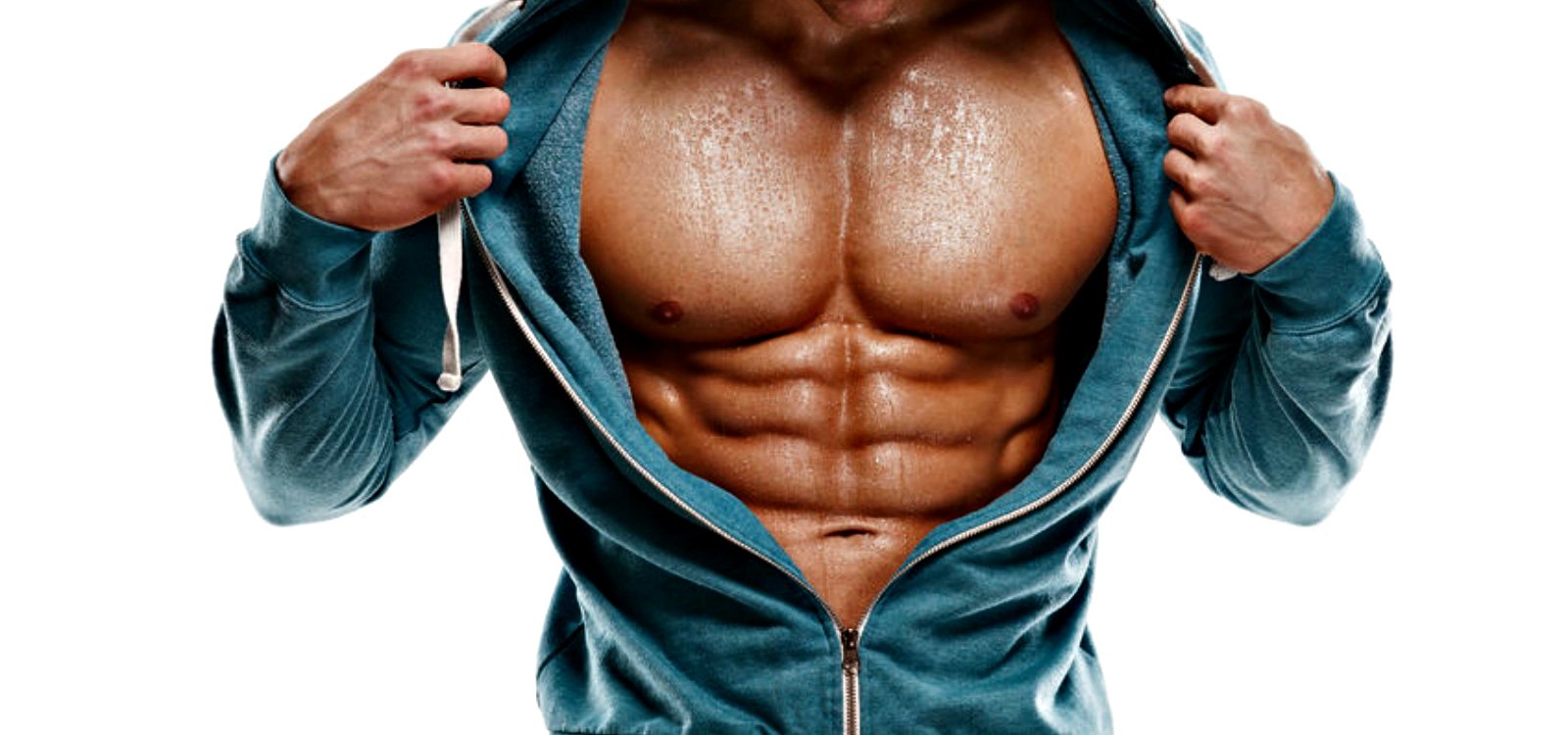
Building the perfect workout routine requires a bit of thought but the payoff is well worth it.
Once you really dial in what works best for your body, schedule, and goals, you save yourself untold amounts of time, energy, and frustration and can focus on just getting the work done and actually enjoying the process.
Don’t overlook the importance and power of overall program enjoyment and compliance.
The truth is if you stuck with even the worst of workout routines for long enough, you’d eventually reach a point where you’re at least decently satisfied with your results. The purpose of building a good workout routine is to get you there faster and ultimately get you to the point where you’re thrilled with what you’ve achieved.
So, you now know more about building effective workout routines than 95% of the people you see in the gym every day. Put the knowledge to good use and let me know how it goes!
Want More Workouts?
The Ultimate Chest Workout
The Ultimate Back Workout
The Ultimate Shoulder Workout
The Ultimate Legs Workout
The Ultimate Arms Workout
The Ultimate Abs Workout
The Ultimate Calves Workout
The Ultimate Butt Workout
The Ultimate Forearm Workout
The Ultimate Bodyweight Workout
What’s your take on building a workout routine? Have anything else to share? Let me know in the comments below!
+ Scientific References
- Willardson JM, Burkett LN. The effect of rest interval length on bench press performance with heavy vs. light loads. J strength Cond Res. 2006;20(2):396-399. doi:10.1519/R-17735.1
- Willardson JM, Burkett LN. The effect of different rest intervals between sets on volume components and strength gains. J strength Cond Res. 2008;22(1):146-152. doi:10.1519/JSC.0b013e31815f912d
- de Salles BF, Simão R, Miranda F, Novaes J da S, Lemos A, Willardson JM. Rest interval between sets in strength training. Sports Med. 2009;39(9):765-777. doi:10.2165/11315230-000000000-00000
- Buresh R, Berg K, French J. The effect of resistive exercise rest interval on hormonal response, strength, and hypertrophy with training. J strength Cond Res. 2009;23(1):62-71. doi:10.1519/JSC.0b013e318185f14a
- Souza-Junior TP, Willardson JM, Bloomer R, et al. Strength and hypertrophy responses to constant and decreasing rest intervals in trained men using creatine supplementation. J Int Soc Sports Nutr. 2011;8(1):17. doi:10.1186/1550-2783-8-17
- Wernbom M, Augustsson J, Thomeé R. The influence of frequency, intensity, volume and mode of strength training on whole muscle cross-sectional area in humans. Sport Med. 2007;37(3):225-264. doi:10.2165/00007256-200737030-00004
- Robbins DW, Marshall PWM, McEwen M. The effect of training volume on lower-body strength. J strength Cond Res. 2012;26(1):34-39. doi:10.1519/JSC.0b013e31821d5cc4
- Campos GER, Luecke TJ, Wendeln HK, et al. Muscular adaptations in response to three different resistance-training regimens: specificity of repetition maximum training zones. Eur J Appl Physiol. 2002;88(1-2):50-60. doi:10.1007/s00421-002-0681-6





